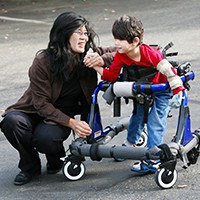Disability Awareness: Tapping Into the CPP Disability Benefits

Last week we launched our five-part Disability Awareness series discussing tax relief for those who have become disabled and their caregivers. In this second part, we talk about income supports that are available. These articles are excerpted from Jacks on Tax, by Evelyn Jacks.
A disabled person may need to leave work, temporarily or permanently. Various insurance plans may be available for income replacement, but if they do not produce enough, other investments must be tapped. Following are some of the common income replacement sources that may be available, and how to report them on the tax return.
CPP Disability Pension. After a three-month waiting period, benefits under this plan may be payable up to age 65 if the applicant is permanently disabled. CPP disability pension benefits are taxable and will be reported to you in Box 16 of a T4A(P) slip. Your software will post this amount to Line 114 and Line 152 of your tax return. This is because the benefits are also considered to be earned income for RRSP purposes and this notation will take them into account to enable you to make additional RRSP contributions in future years, which can offset the taxes that may be generated by the benefits.
The payments are made for conditions that are “severe and prolonged.” For CPP Disability Benefit purposes, this refers to a mental or physical disability that regularly restricts the purpose from doing any type of substantially gainful work. Prolonged means the disability is likely to be long-term and last indefinitely or will likely result in death.
In the year you begin receiving CPP disability benefits, your required CPP premiums will be prorated. Be sure to enter the number of months shown in Box 21 of the T4A(P) slip so your software can complete Form T2204 and determine if you’ve overpaid CPP. You can apply for the benefits retroactively, but only for 11 months.
When you qualify for CPP Disability Pension, a Children’s Benefit is also available, if the child is your natural or adopted child, or a child in your care and custody, and either under the age of 18 or between 18 and 25 and attending a recognized school or university full time. The child will report that income.
Special averaging will occur on your tax returns if you receive a lump sum that is over $300. CRA will do this automatically for you. When that happens, see a tax pro to ensure other tax deductions or credits—like medical expenses or spousal amounts—require optimization between spouses with the new results.
NEXT TIME: EI Benefits for Disabled People
LAST TIME: Disability Awareness Week
Excerpted from Jacks on Tax, by Evelyn Jacks. © All rights reserved.